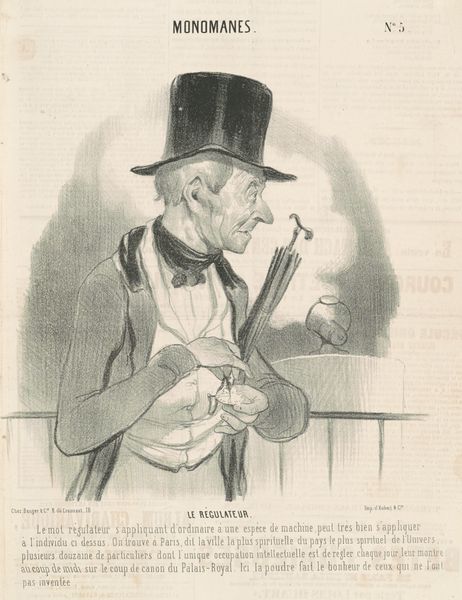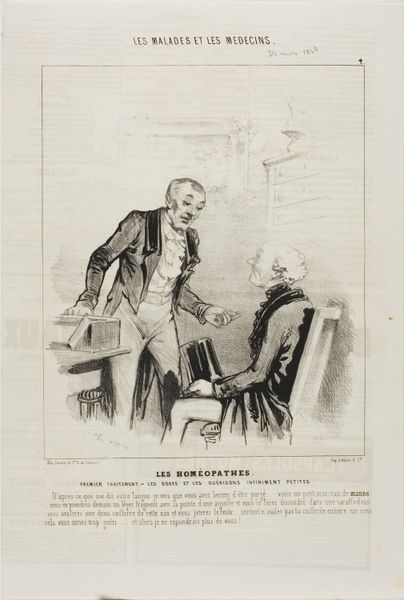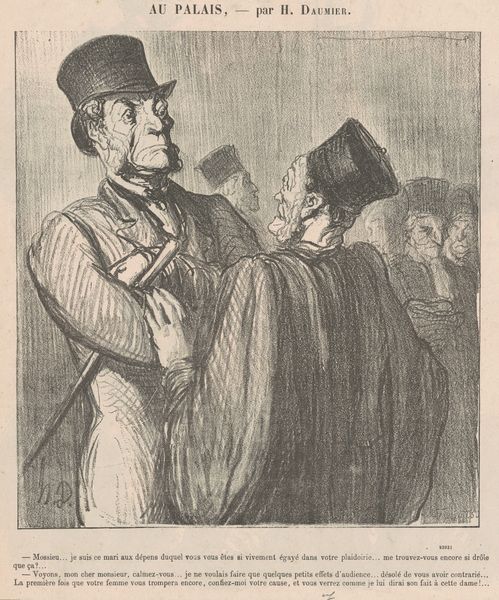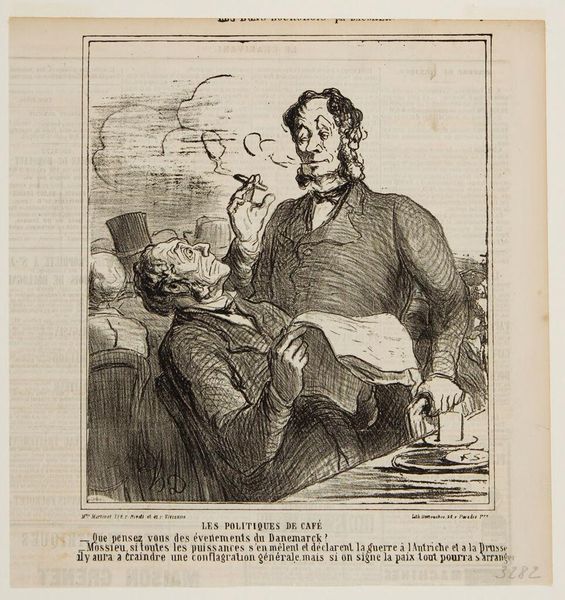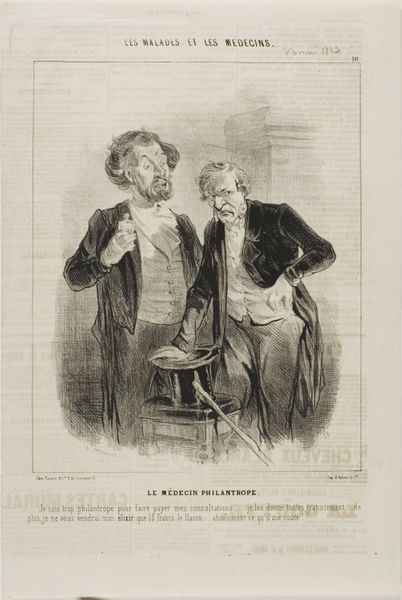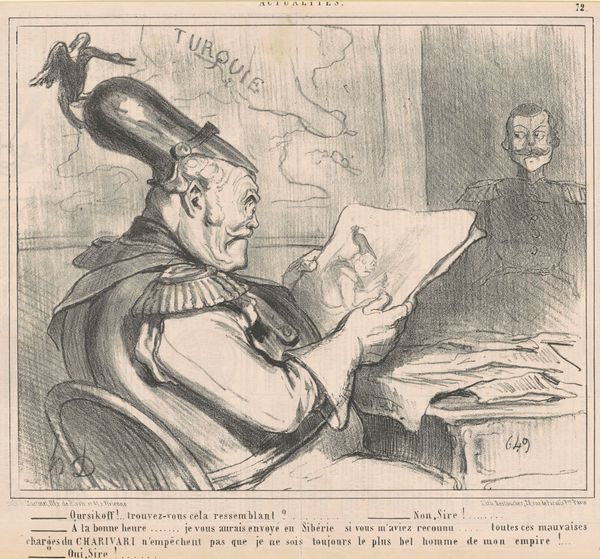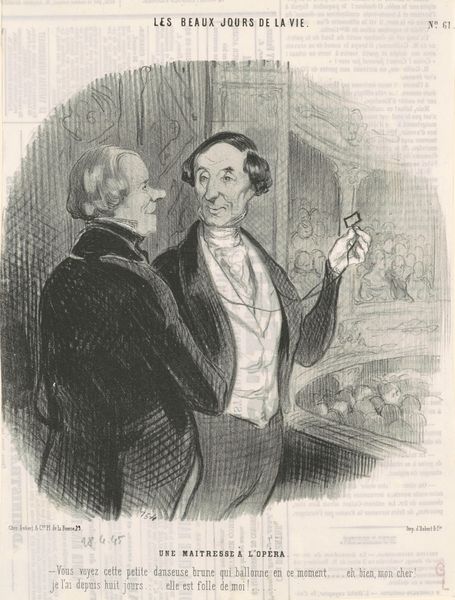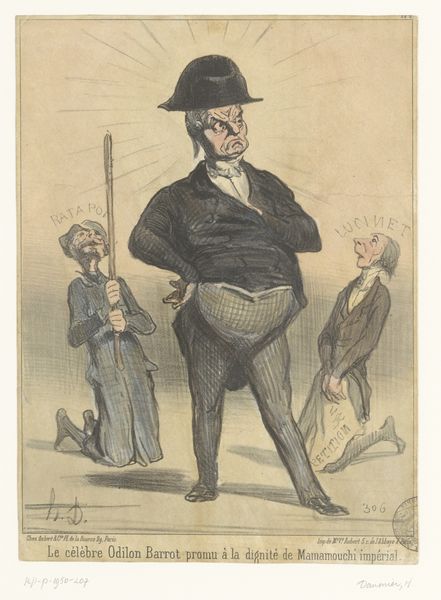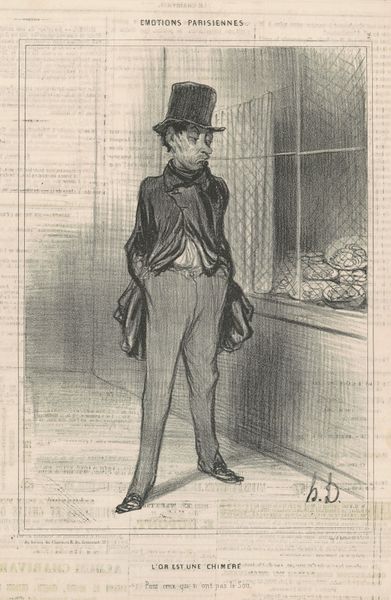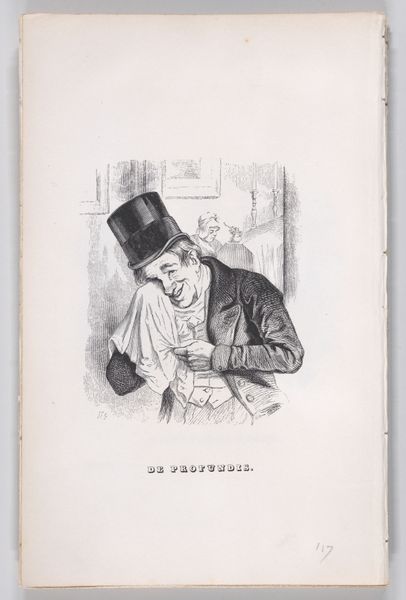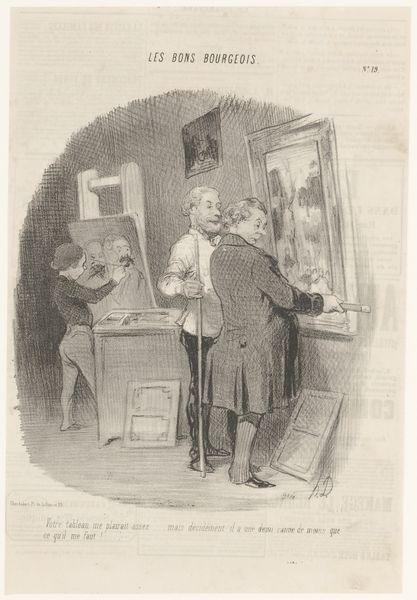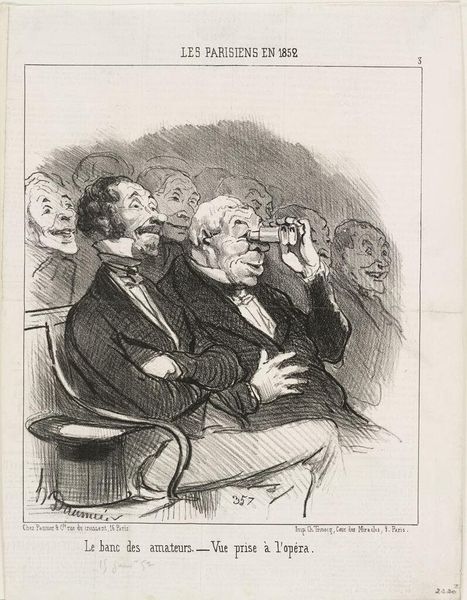
drawing, lithograph, print, pen
#
portrait
#
pencil drawn
#
drawing
#
lithograph
# print
#
caricature
#
pencil sketch
#
pencil drawing
#
romanticism
#
sketchbook drawing
#
pen
#
portrait drawing
#
genre-painting
Copyright: National Gallery of Art: CC0 1.0
Curator: Here we have "La loge grillée," or "The Box Grated," a lithograph attributed to Honoré Daumier from the 19th century. Editor: My initial impression is a somewhat leering gaze, hidden, separated, like the construction of seeing becomes suspect, no? Curator: Absolutely. Daumier excelled at capturing social commentary through visual metaphor. The "loge grillée," or grated box, immediately introduces a physical barrier, a space of separation and implied secrecy. These boxes were social currency, emblems of status. What Daumier suggests is that they enable a kind of peeping, transforming spectatorship itself into something furtive. Editor: And he achieves this effect through such clever material manipulation. The lithographic process allowed for a level of detail that underscored both the affluence, suggested through the figure’s dress, but also a sketch-like immediacy that renders the gaze invasive. One has to also think about what kind of stone was available at the time. These printing stones—often limestone, no?—were relatively easy to obtain. I'm also curious about how much Daumier was paid to draw a man staring in this manner! Curator: The lithograph as a medium suited Daumier’s purposes. It allowed for a relatively quick reproduction and distribution of these social critiques to a broad audience through newspapers and journals. He often portrayed members of the bourgeoisie as caricatures. Consider the man’s slightly exaggerated features – the puffed-up hair, the wide eyes magnified by his opera glasses. Editor: Which speaks to how access to images—cheap prints distributed for mass consumption—reflect larger structures of power. Was the artist using lithography, then, simply out of economic necessity, or because it granted a certain aesthetic that would add a level of vulgarity to match its content? And to think it all started with a grease pencil! Curator: Exactly. And to go further, Daumier isn’t simply poking fun at this man. The composition invites us to question what we are *all* looking at, who holds the power, and the ethical implications of looking itself. The artist masterfully employs an understanding of art history, caricature, and the power dynamics of French society. Editor: Considering his likely labor involved, "The Box Grated" raises all sorts of questions about the politics of spectatorship, both then and now. It seems like every single aspect of the lithograph – its social function, artistic interpretation and technical origins - are linked together, revealing systems of exchange. Curator: Indeed. It shows how art-making is deeply intertwined with social observation and critique, something Daumier excelled at. Editor: Something to remember next time you reach for your opera glasses.
Comments
No comments
Be the first to comment and join the conversation on the ultimate creative platform.
